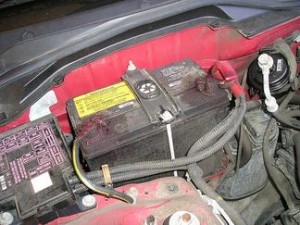An average car battery lasts about four years, but there are some factors that could affect the lifespan of your automotive battery. Don’t let these battery drains ruin your morning commute or your long, summer weekends. With summer vacations coming up, make sure that your car and car battery are in good shape for driving and replace any worn batteries to ward off the need for roadside assistance.
Factors that deplete battery life
· High heat – Excessive summer heat can shorten a battery’s life by causing corrosion. Heat also promotes faster evaporation of car battery fluid, which can lead to battery damage. The damaged battery then charges at a higher rate than it should, which leads to a slow and steady battery death.
· Dirt – A dirty battery corrodes faster than a clean one. Dirt also acts as a conductor, helping to bleed your battery of juice faster than normal. When you work under the hood, take a spare minute to brush extra dirt off your battery.
· Low driving – Many car batteries fail in Japan because the average car doesn’t receive enough daily use to fully recharge the battery. If you rarely drive long distance, your battery may undergo a process known as sulferization as a result. So consider that long weekend away good for your car’s health!
· Defects – While it is not a high cause of battery failure, factory defects do occur and they can shorten the lifespan of your battery.
· Driving habits – If you regularly use additional devices while driving, this can drain the car battery. From windshield wipers to auxiliary audio jacks, your car battery is often powering so much more than just the vehicle. While today’s car battery is used to a higher degree of stress than the batteries of old, driving habits can take their toll. Satellite radios, GPS systems, portable DVD players, and radar detectors all play a role in draining a car’s battery power. If you regularly use these devices, be extra aware of the juice in your car’s battery and remember to keep a spare handy.
Changing a battery
AAA recommends replacing your battery after three to four years. As with other minor car repairs, it’s better to do it yourself before something goes wrong than to be stranded on the side of the road for something that you saw coming but did not address. If you need to replace your battery, a car battery size chart can help you select the right model.
Begin testing your battery at the three year mark using a voltmeter. If you see evidence that your battery is beginning to fail, head to the automotive parts store for a new battery. If your battery is four years old (or older!) skip the testing and replace it outright. The new battery is less expensive than paying for emergency roadside assistance. Sure, an emergency vehicle repair kit can help you charge your battery or jump your car in your moment of need, but a simple battery change is inexpensive and smart.
Change your car’s battery yourself or visit a mechanic who can do it for you. You’re better safe than sorry when it comes to cars, especially with something as important as the automotive battery.
